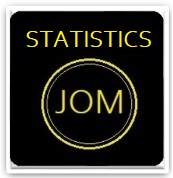TRAINING, ENVIRONMENT, AND EMPLOYEE PERFORMANCE : SYSTEMATIC LITERATURE REVIEW
Abstract
This article aims to analyze training, work environment, and employee performance. This article was prepared using the Systematic Literature Review (SLR) method. SLR is a systematic literature review method that identifies, reviews, evaluates, and interprets all available research. With this method, researchers review and identify journals in a structure that, in each process, follows predetermined steps. Employee performance is one of the main factors for the company to achieve its goals. Apart from being a factor in achieving goals, employee performance is also a way to measure the quality of human resources in a company. The analysis of various journals indicates that both training and the work environment significantly influence employee performance. The training given to employees will improve their performance, and a comfortable work environment will also improve employee performance.
Keywords: Training; Environment; Employee Performance
Downloads
References
Ahmed, H., Sefenu, J. C., Mensah, J. V., Keney, G., Ahmed, H., Sefenu, J. C., & Mensah, J. V. (2024). Technical staff ’ s conception of training and development and its influence on performance : the case of University of Cape Coast , Ghana. International Journal of Training Research, 00(00), 1–18. https://doi.org/10.1080/14480220.2024.2304821
AigAsein, A., ASoetan, T., & Akintoye, I. R. (2019). Implications Of Human Resource Accounting On Human Capital Measurement In Financial Reports. International Journal of Advanced Research, 7(1), 287–295.
Al Amri, H. S. S., & Pandey, J. (2020). The perceived impact of employee turnover and its outcome on the efficiency of the organizational performance. Journal of Student Research, 1–11. https://doi.org/10.47611/jsr.vi.891
Aliyyah, N., Prasetyo, I., Rusdiyanto, Endarti, E. W., Mardiana, F., Winarko, R., Chamariyah, Mulyani, S., Grahani, F. O., Rochman, A. S., Kalbuana, N., Hidayat, W., & Tjaraka, H. (2021). What Affects Employee Performance through Work Motivation? Journal of Management Information and Decision Sciences, 24(1S). https://doi.org/https://www.abacademies.org/articles/what-affects-employee-performance-through-work-motivation-11529.html
Carrera-Rivera, A., Ochoa, W., Larrinaga, F., & Lasa, G. (2022). How-to conduct a systematic literature review: A quick guide for computer science research. MethodsX, 9. https://doi.org/10.1016/j.mex.2022.101895
Chen, J., Zhao, Y., Wang, Y., & Jia, T. (2023). How boundary-spanning search brings about innovation performance: the contingent effects of in house training of employees and communication investment. Technology Analysis and Strategic Management, 1–15. https://doi.org/10.1080/09537325.2023.2222197
Demirović, B., D., Petrović, M. D., Sekulić, D., Radovanović, M. M., Blešić, I., Vuksanović, N., Cimbaljević, M., & Tretiakova, T. N. (2022). Significance of the Work Environment and Personal Resources for Employees’ Well-Being at Work in the Hospitality Sector. International Journal of Environmental Research and Public Health, 19(23), 1–15. https://doi.org/10.3390/ijerph192316165
Duan, L., Song, H., Huang, X., Lin, W., Jiang, Y., Wang, X., & Wu, Y. (2023). The influence of feedback on employees’ goal setting and performance in online corporate training: a moderation effect. Information and Learning Science, 124(11–12), 442–459. https://doi.org/10.1108/ILS-02-2023-0012
Khan, N. A., Mihoci, A., Michalk, S., Sarachuk, K., & Javed, H. A. (2022). Employee Performance Measures Appraised by Training and Labor Market: Evidence from the Banking Sector of Germany. Administrative Sciences, 12(4). https://doi.org/10.3390/admsci12040143
Lee, Y. L. A., Malik, A., Rosenberger, P. J., & Sharma, P. (2020). Demystifying the differences in the impact of training and incentives on employee performance: mediating roles of trust and knowledge sharing. Journal of Knowledge Management, 24(8), 1987–2006. https://doi.org/10.1108/JKM-04-2020-0309
Nauman, S., Bhatti, S., Jalil, F., & Riaz, M. B. E. (2020). How training at work influences employees ’ job satisfaction : roles of affective commitment and job performance. International Journal of Training Research, 00(00), 1–16. https://doi.org/10.1080/14480220.2020.1864444
Pradhan, R. K., & Jena, L. K. (2016). Employee Performance at Workplace: Conceptual Model and Empirical Validation. Business Perspectives and Research, 5(1).
Saepudin, S., Fauzi, A., & Pujiwati, A. (2023). Pengaruh Pelatihan, Lingkungan Kerja dan Kompensasi Terhadap Kinerja Pegawai: SLR. Jurnal Ekonomi Manajemen Sistem Informasi, 5(2), 156–171.
Singh, I., Pancha, J. J., & Kumar, S. (2023). Employee Training and Development Enhancing Employee Performance-A Study. Samdarshi, 16(August), 406.
Suratmi, S., & Sopandi, W. (2022). Knowledge, skills, and attitudes of teachers in training critical thinking of elementary school students. Journal of Education and Learning (EduLearn), 16(3), 291–298.
https://doi.org/10.11591/edulearn.v16i3.20493
Tamsah, H., Ilyas, G. B., Nurung, J., Jusuf, E., & Rahmi, S. (2023). Soft skill competency and employees’ capacity as the intervening factors between training effectiveness and health workers’ performance. Cogent Business and Management, 10(1). https://doi.org/10.1080/23311975.2023.2199493
Triandini, E., Jayanatha, S., Indrawan, A., Werla Putra, G., & Iswara, B. (2019). Metode Systematic Literature Review untuk Identifikasi Platform dan Metode Pengembangan Sistem Informasi di Indonesia. Indonesian Journal of Information Systems, 1(2), 63. https://doi.org/10.24002/ijis.v1i2.1916
Vuong, T. D. N., & Nguyen, L. T. (2022). The Key Strategies for Measuring Employee Performance in Companies: A Systematic Review. MDPI, 14(14017), 1–21. https://doi.org/10.3390/su142114017
Wati, Y. R., & Baskoro, E. (2021). Pengaruh Pelatihan Kerja, Pemberdayaan Karyawan dan Lingkungan Kerja terhadap Kinerja Karyawan. Jurnal Manajemen DIVERSIFIKASI, 1(2), 198–211. https://doi.org/10.24127/diversifikasi.v1i2.563
Yeni, S., W. D. F. (2023). Pengaruh Pelatihan Kerja, Lingkungan Kerja Dan Kepuasan Kerja Terhadap Kinerja Karyawan Pt Indomarco Prismatama Jakarta. Ekonomi, Manajemen Dan Akuntansi, 1(1), 279–292.
Yimam, M. H. (2022). Impact of training on employees performance : A case study of Bahir Dar university , Ethiopia Impact of training on employees performance : A case study of Bahir Dar university , Ethiopia. Cogent Education, 9(1). https://doi.org/10.1080/2331186X.2022.2107301

 Rosa Indah Parawansah(1*)
Rosa Indah Parawansah(1*)



